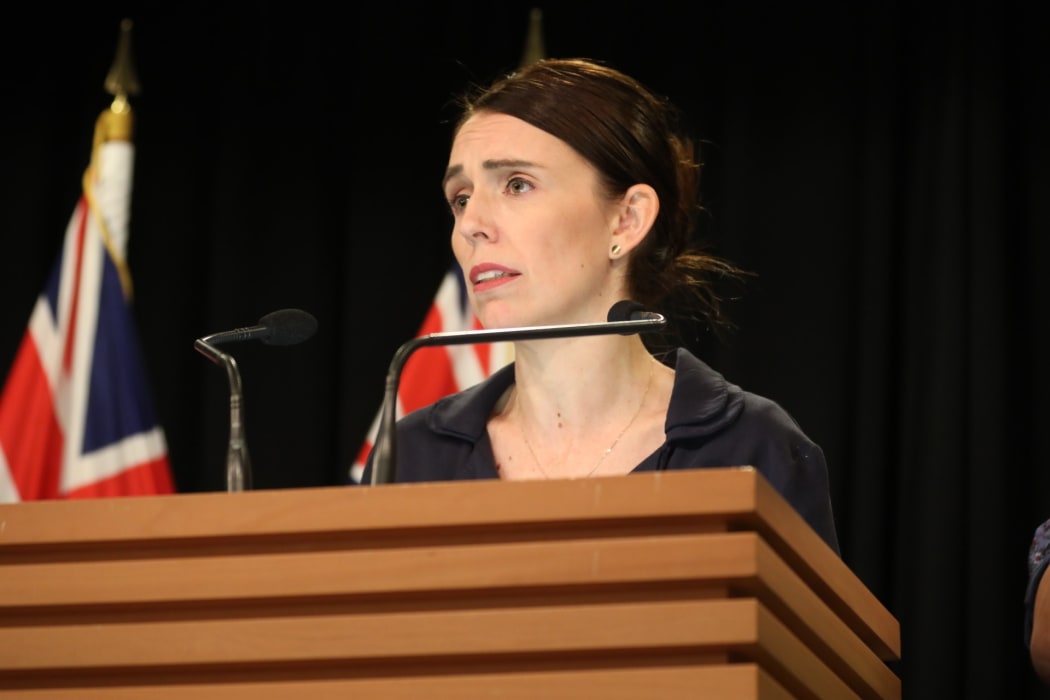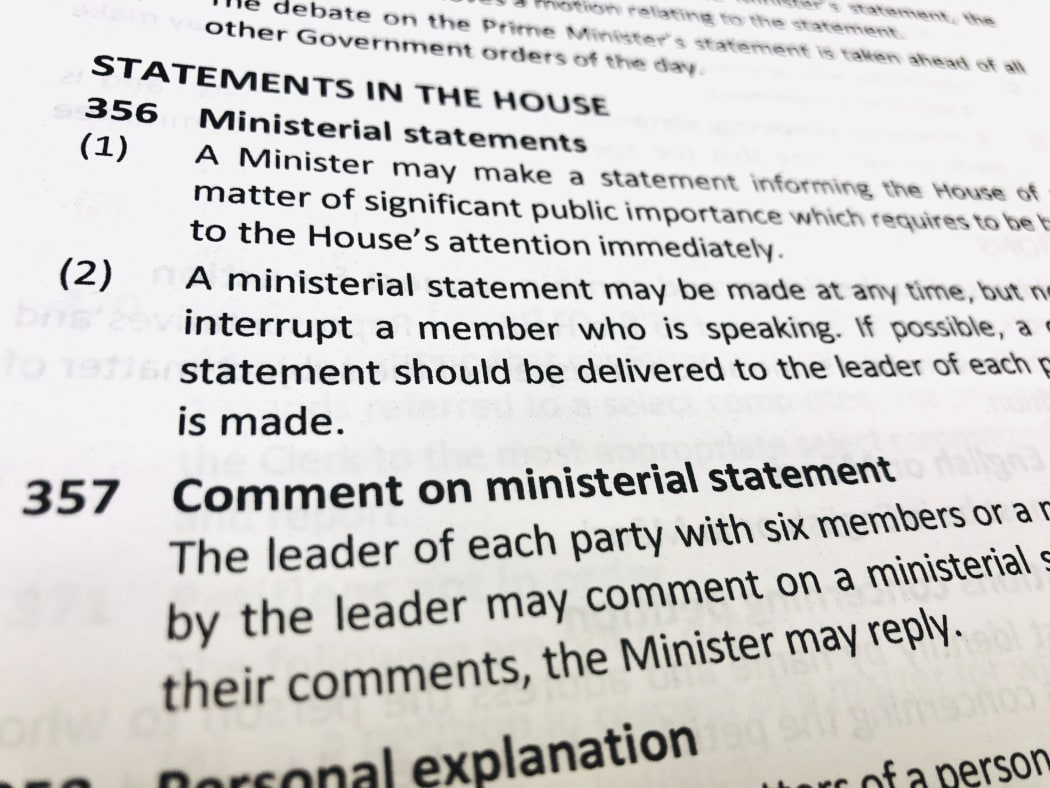Parliament will sit for a much shorter time than usual today as a mark of respect for those affected by the mosque terror attacks in Christchurch last Friday.
The prayer will start the session at 2pm as usual and then a ministerial statement will take plac. The House will adjourn afterwards.
Christchurch mosque terror attacks - Ministerial Statement

Prime Minister Jacinda Ardern gives a briefing to media two days after the attack on two Christchurch mosques. Photo: RNZ / Ana Tovey
A Ministerial statement will be made by the Prime Minister Jacinda Ardern in the House today to mark the terror attacks on two mosques in Christchurch last week.
What happened?
Fifty people died after two attacks on mosques in Christchurch.
The attacks took place at the Al Noor Mosque and the Linwood Mosque on Friday.
Fifty people were also injured and the national security threat level has been increased from low to high for the first time in New Zealand's history.
What is a Ministerial Statement?
Ministerial Statements are a way for the Government to inform the House of a significant event or something of public importance.
Topics over the last year have included culling cattle to stop the spread of mycoplasma bovis, the Nelson bush fires, and on a happier note, congratulating the 2018 New Zealand Winter Olympics team.
A Ministerial Statement can be made at any time in the House but cannot interrupt a member who is speaking and cannot be made during the committee of the whole House (which is one of the stages of a bill’s passage to becoming law).

The rules for a ministerial statement in the Standing Orders book which are rules for Parliament. Photo: VNP / Daniela Maoate-Cox
What’s the format?
This type of announcement has been around since the first session of the New Zealand Parliament but the format was first outlined in Parliament’s rule book (called Standing Orders) in 1979.
The general procedure for a Ministerial Statement is as follows:
-
The Minister or Associate Minister that wishes to make the ministerial statement will have five minutes to speak.
-
Other party leaders with six or more members are entitled to comment for up to five minutes.
-
Smaller parties or other members might be allowed to speak and the amount of time can be extended.
-
The Minister is allowed the final say with a two minute reply at the end.
A Minister (including an Associate Minister) can make a ministerial statement and it is largely up to them to decide if the issue is significant enough. For example, after the Canterbury earthquakes in 2011 the Prime Minister and Deputy Prime Minister made ministerial statements to inform the House and a separate one was made by the Minister of Civil Defence to announce a state of national emergency. Further statements happened when the state of national emergency was extended over the following weeks and when it was lifted.
Sometimes a copy of the statement is circulated to other party leaders before it’s made.
What is said?
The content of the party leaders speeches can vary from support and general agreement to criticism depending on the topic.
When the Minister for Agriculture Damien O’Connor made a ministerial statement on the mycoplasma bovis outbreak he outlined the reasons the Ministry for Primary Industries would cull 22,332 cattle.
“I note that the industry has backed the Government's decision and decisive actions in recent days, saying that these steps will allow farmers to plan for the future,”he said.
“These latest actions will be paid for by $85 million that Cabinet and industry groups dedicated to the response earlier this month.”
From the Opposition side, National Party spokesperson for Agriculture Nathan Guy said the party supported the Government’s decision but questioned whether it was enough.
“[The ministerial statement] says that Cabinet has still to decide if full eradication will take place and if, indeed, it's economically viable. That is a "get out of jail" card for the coalition Government,” he said.
“Yes, they have made a commitment yesterday to cull 22 herds, but we want to see this continue. I guess they're waiting to see some further evidence that may pop up when animals are indeed under stress.”
How long?
There’s no requirement for all party leaders to speak so the length can vary but if each party leader speaks for five minutes and the minister responds at the end it can take about half an hour.
More time could be given if the speech times are extended or if other members also speak but it's up to the House to decide if this will happen.
The House will adjourn after the statement as a mark of respect. This also happened after the Pike River Mine disaster in 2010 and the Christchurch earthquake in 2011.
See how much the House gets through on Parliament's website here.


